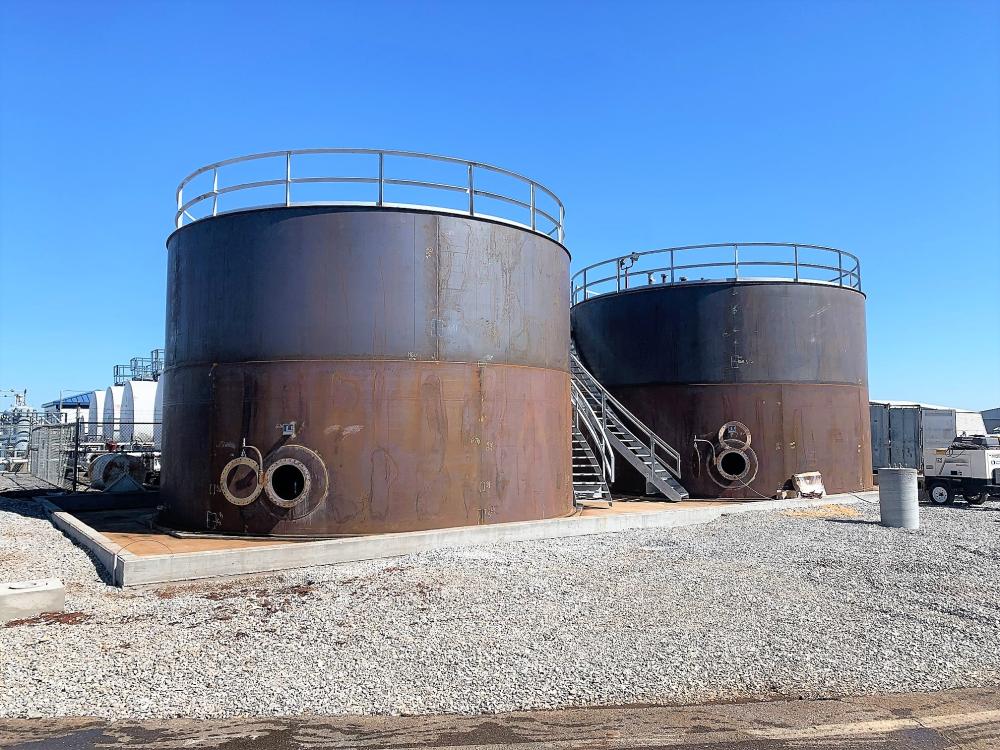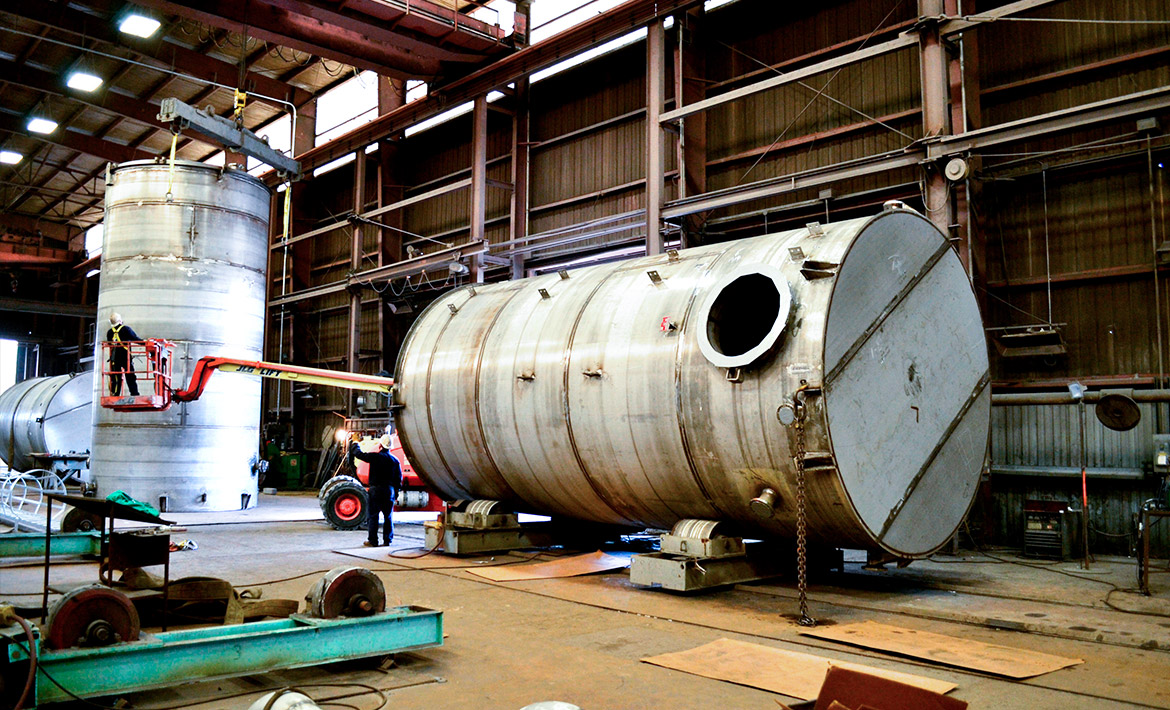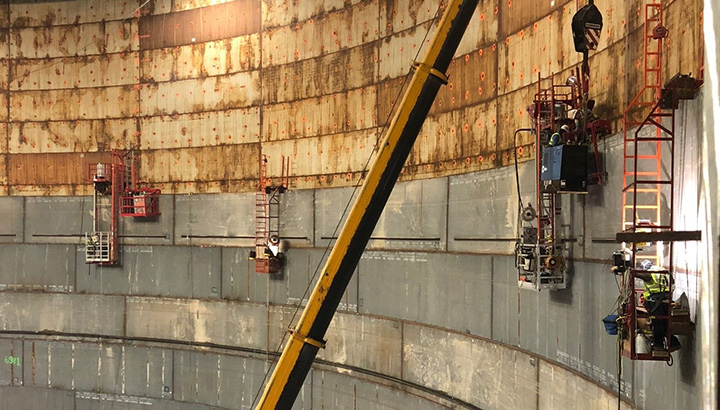A Detailed Take A Look At the Installation Refine of Welding Inspection Techniques
Welding inspection is a crucial procedure that assures architectural honesty and security. The setup of assessment methods involves several organized actions, each important to accomplishing reputable results. From planning and device choice to carrying out visual and non-destructive tests, each stage demands careful focus. Understanding these procedures can considerably enhance quality control in welding tasks. What difficulties arise in applying these methods, and how can they be effectively attended to?
Understanding the Relevance of Welding Assessment
Welding evaluation is a critical part of guaranteeing architectural stability and safety and security in building and production processes. This technique involves examining welded joints for flaws, ensuring that they satisfy details requirements and laws. By systematically assessing weld quality, examiners can recognize issues such as fractures, voids, and incomplete combination, which can compromise the stamina and longevity of structures.
The relevance of welding evaluation prolongs past immediate safety worries; it aids prevent costly failures and prospective threats in the long-term. Effective assessment strategies foster conformity with sector standards, thus improving the general dependability of bonded elements. In enhancement, a robust examination process adds to maintaining the track record of makers and building contractors, as it assures customers of the top quality of their tasks. Inevitably, recognizing the relevance of welding examination is critical for advertising risk-free building methods and guaranteeing the durability of crucial facilities and products.
Selecting the Right Tools for Examination
When choosing the ideal tools for examination, it is crucial to ponder the certain requirements of the welding procedure and the materials entailed. Various assessment techniques, such as aesthetic, ultrasonic, and radiographic testing, necessitate unique devices tailored to their special needs. For visual examinations, tools like amplifying glasses and calipers are essential for assessing weld high quality. Ultrasonic testing calls for specialized devices qualified of transferring and getting audio waves to spot interior imperfections. Radiographic screening, on the other hand, makes use of X-ray or gamma-ray resources alongside delicate film or digital detectors to reveal variances.
Additionally, personal protective equipment (PPE) is vital to ensure the security of examiners during examinations. Choosing the right devices not only improves the accuracy of evaluations however likewise contributes to the overall integrity and safety of the welding task. A complete understanding of offered tools and their applications is important for effective welding inspection.
Planning for the Assessment Process
Before launching the assessment process, it is important to develop a detailed strategy that lays out the scope and purposes of the evaluation. This strategy must consist of details requirements that define what comprises acceptable top quality in the welding work being inspected. Determining the relevant codes and requirements is important, as they will certainly direct the examination requirements and approaches.
Furthermore, personnel associated with the evaluation has to be sufficiently educated and accredited in welding examination techniques to assure reliability and accuracy. A list can be advantageous in arranging the numerous aspects of the assessment, ranging from equipment preparedness to ecological conditions that might influence the assessment.

Logistical factors to consider such as organizing, offered resources, and interaction in between team members need to be attended to. By preparing systematically, inspectors can boost the efficiency of the assessment and ensure that all essential variables are appropriately thought about before waging the inspection itself.
Carrying Out Aesthetic Examinations

Conducting visual assessments is an important action in the welding inspection process, requiring cautious preparation to ensure reliable analysis. Inspectors must recognize with essential problem signs that can indicate prospective issues in weld quality. By focusing on these aspects, one can enhance the total integrity of the examination end results.
Planning For Visual Examination
Aesthetic assessment offers as an important initial step in the welding evaluation process, assuring that any kind of prospective problems are identified early (API 650 Welding Inspection). Correct prep work is vital for effective aesthetic examination. Examiners should start by assessing appropriate documentation, consisting of welding procedures and specifications, to recognize the job requirements. They must collect required devices, such as amplifying glasses, flashlights, and appropriate individual protective tools (PPE) A complete evaluation of the examination area is important; examiners should validate it is totally free and tidy of obstructions. In addition, it is vital to establish perfect lights conditions to improve presence of welds. By taking my link these preparatory actions, inspectors can produce an environment favorable to recognizing inconsistencies and ensuring the integrity of the welded frameworks
Key Flaw Indicators
A thorough understanding of crucial issue indicators is necessary throughout visual evaluations to assure the quality and security of bonded joints. Assessors need to concentrate on particular signs such as splits, porosity, damages, and insufficient fusion. Cracks may appear as sharp lines and can jeopardize structural stability. Porosity shows up as tiny openings that can damage weld toughness. Undercuts, which are grooves along the weld edge, can lead to tension concentration. Incomplete fusion indicates that the weld metal did not correctly bond with the base material, resulting in a weak joint. By systematically identifying these defects, inspectors can determine compliance with industry standards and boost the total integrity of click this bonded frameworks, ultimately adding to safer operational conditions.
Executing Non-Destructive Evaluating Techniques

Numerous non-destructive screening (NDT) methods are essential to guaranteeing the integrity of bonded structures without compromising their functionality. These approaches enable inspectors to assess weld top quality and identify issues without triggering damage to the products being evaluated. Usual NDT methods include ultrasonic screening, radiographic testing, magnetic fragment testing, and color penetrant testing. Each approach serves a details function, addressing various kinds of problems such as cracks, porosity, or insufficient fusion.
Applying NDT techniques calls for a systematic strategy, beginning with choosing the appropriate technique based upon the materials and the nature of the weld. Educating employees in these methods is crucial for precise outcomes. Additionally, developing clear treatments and standards assurances uniformity throughout the evaluation procedure. By incorporating NDT into the welding evaluation operations, companies can enhance the dependability of their items while minimizing potential dangers related to architectural failings. This positive approach inevitably contributes to keeping safety and quality requirements in bonded building and constructions.
Examining and recording Examination Outcomes
Effective documentation and analysis of inspection results are vital elements of the welding assessment procedure. Precise records of inspection findings function as a referral for high quality guarantee and compliance with market standards. API 650 Welding Inspection. Inspectors ought to utilize structured forms or electronic systems to log details such as the kind of weld, assessment techniques utilized, and any discrepancies recognized throughout the go to my site examination
When data is collected, thorough evaluation is crucial. This entails comparing results versus established standards to determine trends or recurring concerns. Statistical devices may be used to measure problems and analyze their effect on overall weld top quality.
Reliable communication of searchings for to relevant stakeholders is imperative. Recaps and records should be concise and clear, highlighting crucial understandings and recommendations for restorative actions. By systematically assessing and documenting examination results, organizations can promote continuous enhancement in welding techniques and enhance item honesty.
Frequently Asked Concerns
What Credentials Are Needed to End Up Being a Welding Assessor?
To come to be a welding inspector, one normally requires relevant certifications such as AWS CWI, together with experience in welding techniques, knowledge of welding codes, and proficiency in assessment strategies to assure quality and security requirements.
Just How Usually Should Welding Inspections Be Conducted?
Welding evaluations must be carried out consistently, generally after each weld is completed, and periodically during projects. Elements such as job complexity, industry standards, and regulatory requirements can influence the regularity of these inspections.
What Is the Cost of Welding Inspection Providers?
The price of welding examination solutions differs significantly based on factors such as task size, location, and intricacy. Generally, prices vary from $100 to $150 per hour, with added charges for specialized testing and qualifications.
Exist Certifications for Welding Inspectors?
Yes, there are different certifications for welding inspectors, consisting of those provided by the American Welding Society (AWS) and the International Institute of Welding (IIW) These qualifications ensure inspectors possess the necessary abilities and understanding for effective examinations.

Just how Do I Choose an Assessment Solution Service Provider?
To select an examination provider, one ought to examine credentials, experience, sector reputation, and customer reviews. Furthermore, comparing service offerings and prices can assist ensure the chosen supplier fulfills details task requires successfully.
In addition, employees entailed in the assessment needs to be appropriately educated and accredited in welding assessment methods to ensure dependability and accuracy. Conducting aesthetic examinations is a crucial action in the welding assessment process, requiring careful prep work to ensure efficient evaluation. Aesthetic assessment serves as a crucial first action in the welding assessment procedure, guaranteeing that any type of prospective flaws are recognized early. Reliable documents and evaluation of inspection results are necessary elements of the welding inspection process. Welding evaluations ought to be carried out frequently, usually after each weld is completed, and periodically throughout tasks.